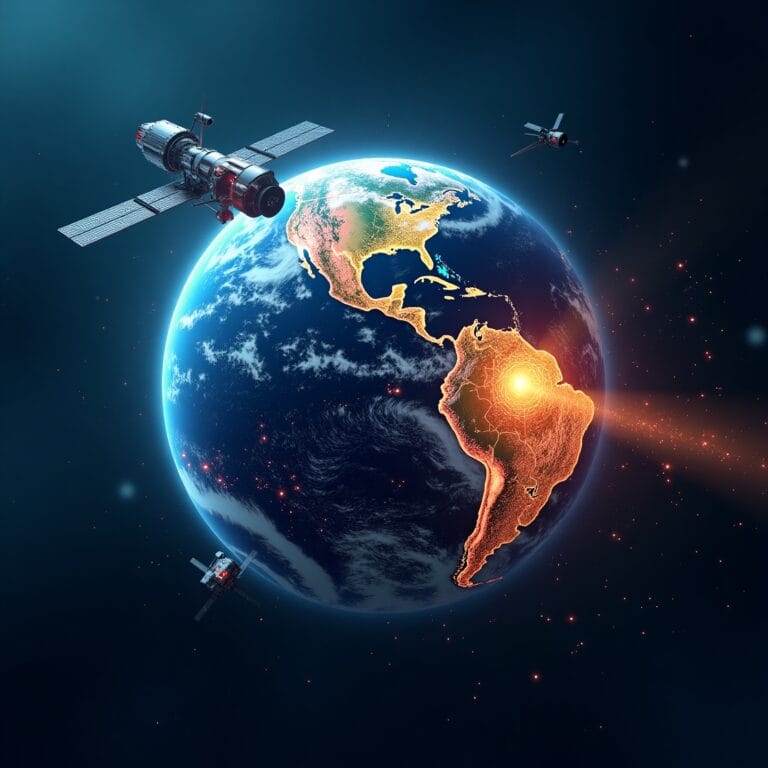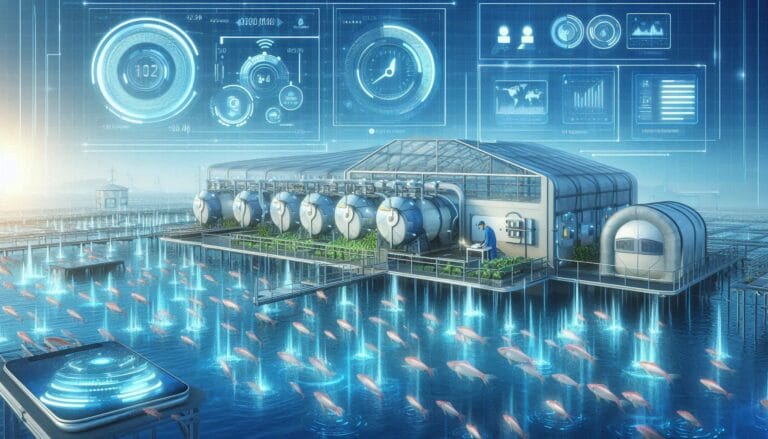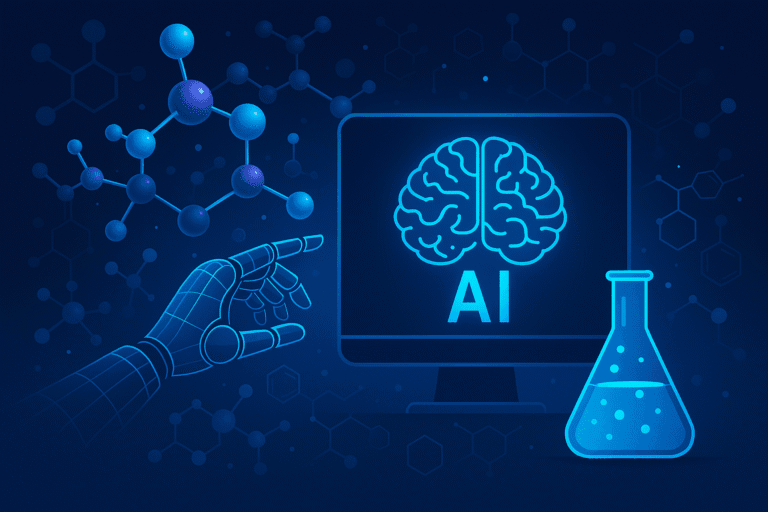Introduction: Why AI in Oceanography Matters
The oceans cover more than 70% of our planet, playing a critical role in regulating Earth’s climate, supporting biodiversity, and providing resources for billions of people. However, studying the oceans has always been a daunting task due to their vastness, depth, and complexity. This is where AI in oceanography comes into play, revolutionizing how we understand and protect our marine environments.
The growing need for AI in oceanography stems from the challenges of analyzing massive datasets, monitoring remote regions, and addressing pressing environmental issues like climate change, overfishing, and pollution. Traditional methods of oceanographic research often fall short in handling the sheer volume of data generated by satellites, sensors, and underwater drones. AI-powered ocean research offers a solution by automating data analysis, identifying patterns, and providing actionable insights in real time.
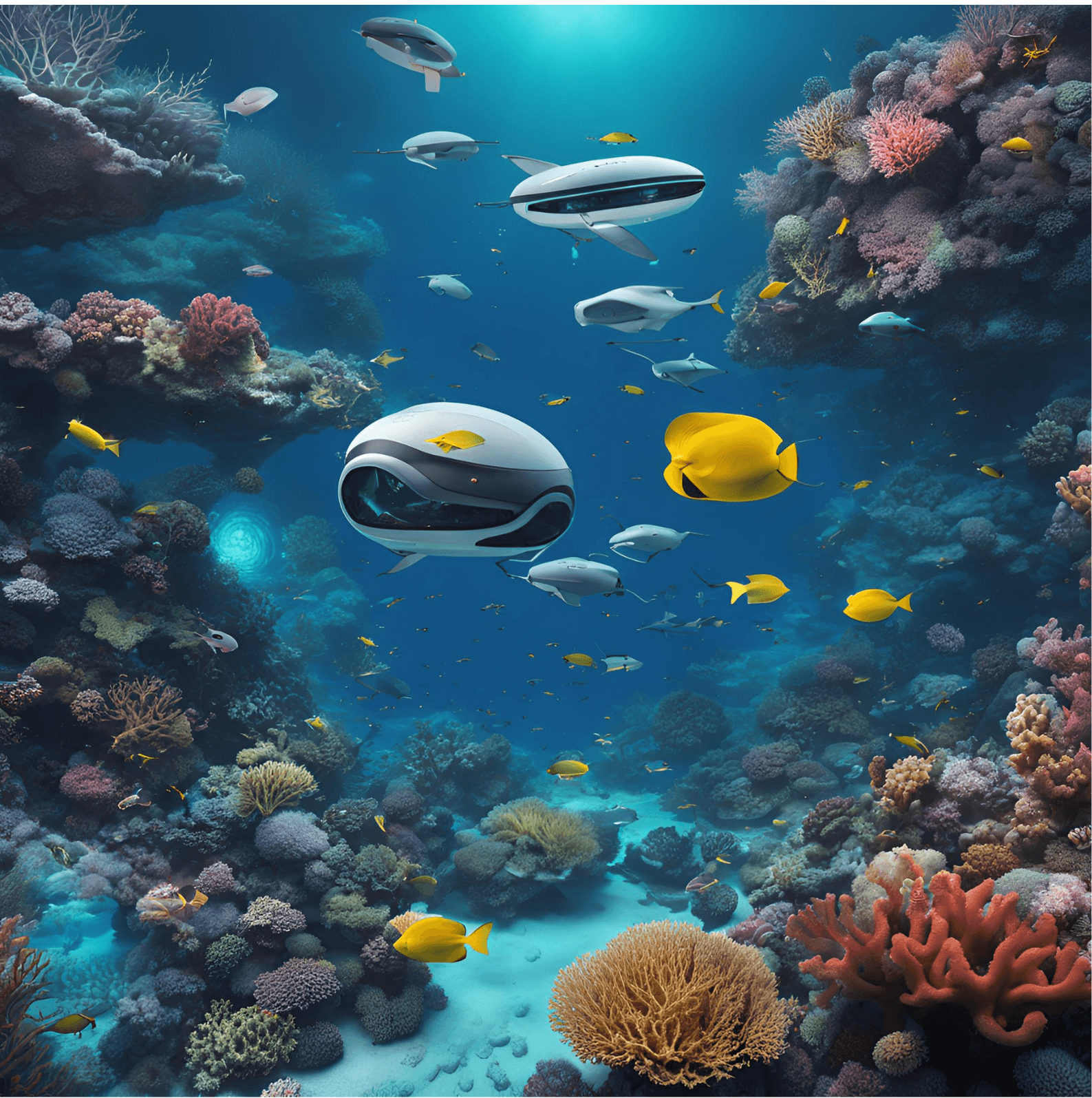
For example, AI for oceans is already being used to monitor coral reef health, track marine species, and predict oceanic changes. By leveraging machine learning and computer vision, researchers can now process terabytes of data in minutes, uncovering trends that would take humans years to detect. This transformative technology is not just enhancing our understanding of the oceans but also empowering us to tackle global challenges like rising sea levels, ocean acidification, and biodiversity loss.
As we delve deeper into the applications, challenges, and future prospects of AI in oceanography, it becomes clear that this technology is not just a tool but a necessity for safeguarding our oceans and, by extension, our planet.
Applications of AI in Oceanography
The integration of AI in oceanography is unlocking new possibilities for marine research, conservation, and exploration. From analyzing vast datasets to enabling underwater exploration, AI for oceans is transforming how we study and protect marine ecosystems.
- Data Analysis: Unlocking Insights from Big Data
The oceans generate enormous amounts of data from satellites, buoys, and underwater sensors. AI in oceanography excels at processing this data, using machine learning algorithms to identify patterns and trends. For instance, AI models can analyze sea surface temperature data to predict El Niño events or detect anomalies that indicate environmental stress. This capability is crucial for understanding complex oceanic processes and making informed decisions about marine conservation.
- Marine Life Monitoring: Protecting Biodiversity
AI is revolutionizing marine life monitoring by automating species identification and behavior analysis. AI-driven marine research uses computer vision to analyze underwater footage, identifying species like whales, sharks, and turtles with remarkable accuracy. For example, AI systems have been deployed to monitor coral reefs, detecting signs of bleaching caused by rising ocean temperatures. These tools not only save time but also provide critical data for conservation efforts.
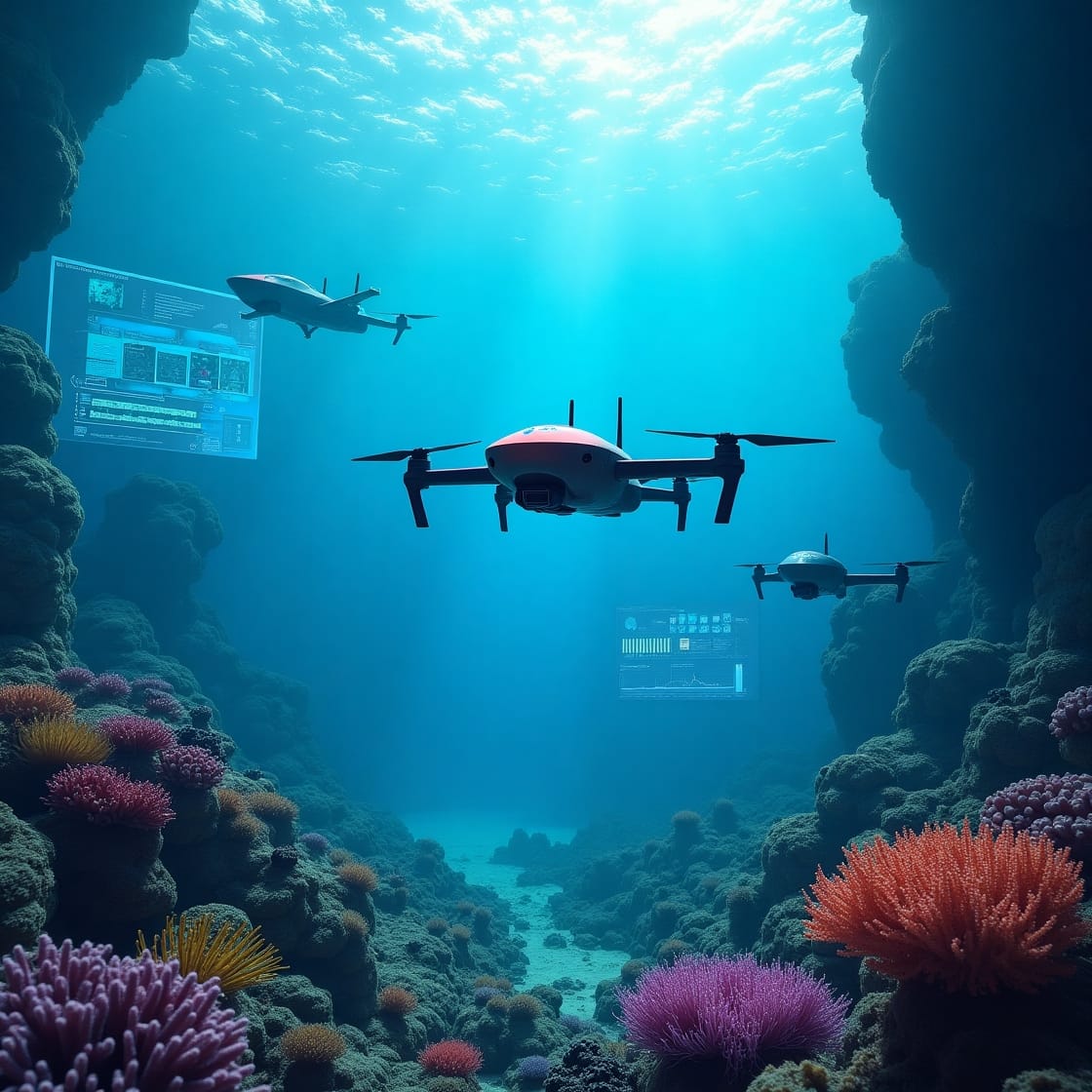
- Climate Modeling: Predicting Oceanic Changes
The oceans play a central role in regulating Earth’s climate, and AI in oceanography is helping us understand this relationship better. AI models can simulate ocean currents, predict sea-level rise, and forecast the impacts of ocean warming on marine ecosystems. For instance, researchers are using AI to study the melting of polar ice caps and its implications for global sea levels. These insights are invaluable for policymakers and scientists working to mitigate the effects of climate change.
- Underwater Exploration: Mapping the Unknown
The deep sea remains one of the least explored regions on Earth, but AI for underwater exploration is changing that. Autonomous underwater vehicles (AUVs) equipped with AI can navigate challenging environments, map the seafloor, and collect data in real time. For example, AI-powered AUVs have been used to discover new hydrothermal vents and underwater volcanoes, shedding light on the geology and biology of the deep ocean.
Real-World Examples
- Coral Bleaching Detection: AI systems analyze satellite imagery to identify coral reefs at risk of bleaching, enabling timely interventions.
- Illegal Fishing Monitoring: AI algorithms process satellite data to detect suspicious fishing activities, helping authorities combat illegal practices.
- Ocean Cleanup: AI-powered drones are being used to locate and collect plastic waste in the ocean, contributing to global cleanup efforts.
By harnessing the power of AI in oceanography, we are not only advancing our scientific understanding but also taking meaningful steps toward protecting our oceans for future generations.
Recent Developments in AI and Oceanography
The field of oceanography is witnessing a wave of innovation, thanks to recent developments in artificial intelligence in oceanography. These advancements are not only enhancing our understanding of marine ecosystems but also providing practical solutions to some of the most pressing oceanic challenges.
AI-Enhanced Predictive Models for Natural Disasters
One of the most significant breakthroughs is the use of AI-powered ocean research to predict natural disasters like hurricanes and tsunamis. AI models analyze vast amounts of oceanic and atmospheric data to forecast the intensity, trajectory, and potential impact of these events. For instance, researchers are using machine learning algorithms to improve tsunami early warning systems by analyzing seismic activity and ocean floor topography in real time. These advancements are saving lives and reducing economic losses in vulnerable coastal communities.
Real-Time Monitoring Systems
AI is also revolutionizing real-time ocean monitoring. Neural networks are being employed to study marine acoustics, enabling researchers to track marine life, detect underwater earthquakes, and monitor ship movements. For example, AI systems can analyze hydrophone data to identify the vocalizations of whales and dolphins, providing insights into their behavior and migration patterns. This technology is particularly valuable for studying species that are difficult to observe directly.
Collaborations and Cutting-Edge Projects
Collaborations between AI researchers and oceanographers are driving groundbreaking projects. Google AI, for instance, has partnered with marine scientists to develop sustainable fisheries management tools. These tools use AI to analyze satellite data and predict fish populations, helping to combat overfishing and promote sustainable practices.
Another exciting development is the use of AI-enabled sensors for real-time pollution tracking. These sensors can detect microplastics, oil spills, and chemical contaminants in the water, providing critical data for environmental protection efforts. Similarly, smart buoys equipped with AI are being deployed to monitor ocean temperatures, salinity, and acidity, offering valuable insights into the impacts of climate change.
These advancements in AI for marine science are not just technological feats; they are essential tools for preserving our oceans and ensuring their sustainable use.
Benefits and Challenges of AI in Oceanography
The integration of AI in oceanography offers immense potential, but it also comes with its own set of challenges. Understanding both the benefits and limitations is crucial for maximizing the impact of AI for oceans.
Benefits of AI in Oceanography
- Improved Accuracy in Ocean Data Analysis
AI excels at processing and analyzing large datasets with precision. For example, machine learning algorithms can identify subtle patterns in oceanographic data, such as changes in sea surface temperature or phytoplankton blooms, that might be missed by traditional methods. This improved accuracy is vital for understanding complex oceanic processes and making informed decisions.
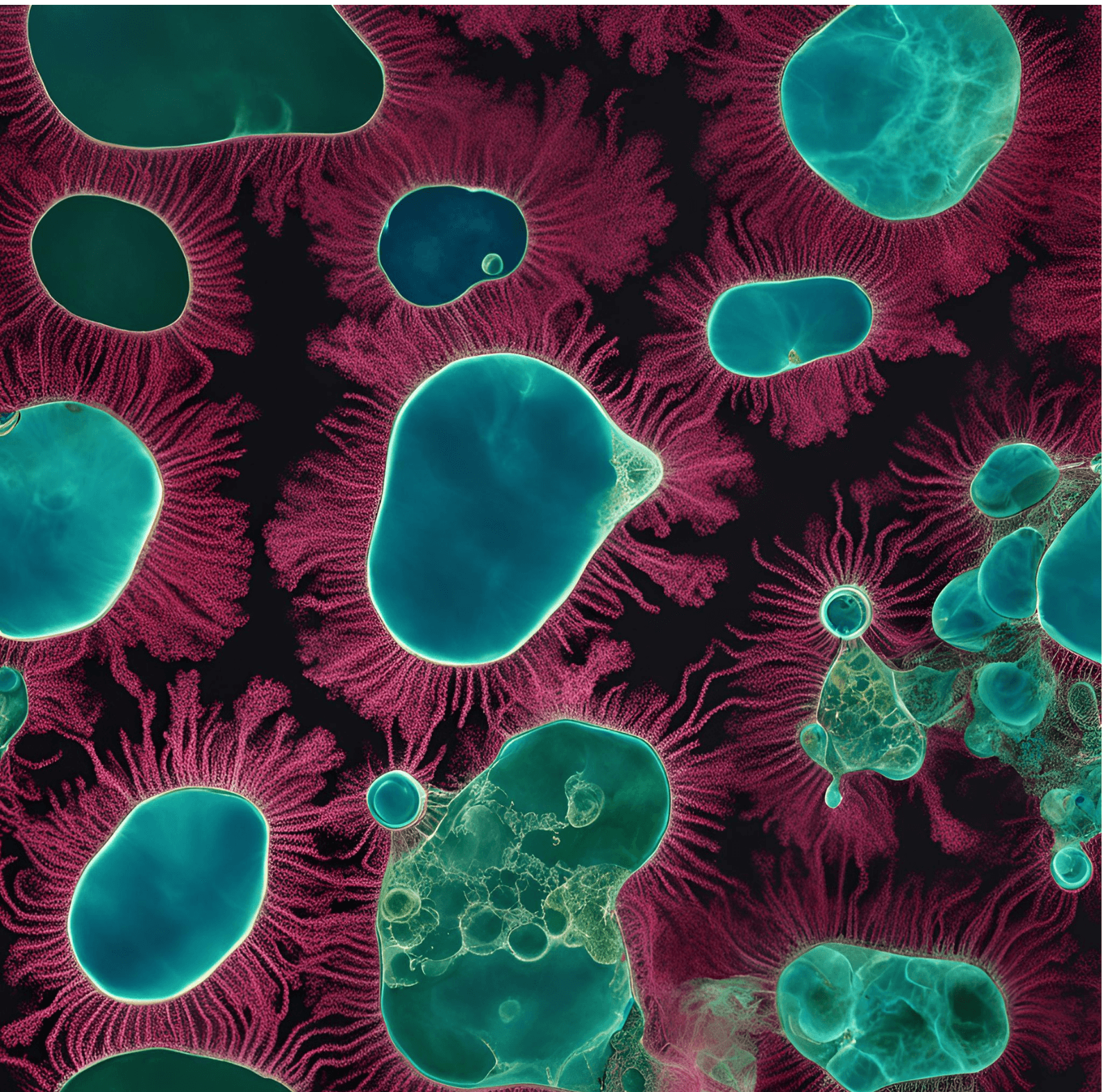
- Cost-Effective Solutions for Large-Scale Monitoring
Traditional oceanographic research often requires expensive equipment and extensive manpower. AI-powered ocean research offers cost-effective alternatives by automating data collection and analysis. For instance, autonomous underwater vehicles (AUVs) equipped with AI can conduct surveys and collect data at a fraction of the cost of manned expeditions. - Enhanced Accessibility to Unexplored Regions
The deep sea and polar regions are among the most challenging environments to study. AI-powered tools like AUVs and remotely operated vehicles (ROVs) are making these regions more accessible. For example, AI-driven mapping systems have been used to explore hydrothermal vents and underwater caves, revealing new insights into these mysterious ecosystems.
Challenges of AI in Oceanography
- Data Scarcity in Certain Regions
While AI thrives on data, many ocean regions, particularly in developing countries, lack the infrastructure for comprehensive data collection. This scarcity limits the effectiveness of AI models in these areas, highlighting the need for global collaboration and investment in oceanographic research. - High Costs of AI-Enabled Equipment
Despite the cost savings in some areas, the development and deployment of AI-enabled underwater equipment can be prohibitively expensive. For example, advanced AUVs and smart buoys require significant financial investment, which may be a barrier for smaller research institutions or developing nations. - Ethical Concerns and Over-Reliance on AI
The increasing reliance on AI in scientific decision-making raises ethical concerns. For instance, there is a risk of over-reliance on AI predictions without sufficient human oversight. Additionally, the use of AI in marine research must be balanced with considerations of data privacy and the potential impact on local communities.
Examples of Success and Areas for Improvement
- Success Story: AI has been instrumental in tracking illegal fishing activities by analyzing satellite data and identifying suspicious vessel movements. This has led to more effective enforcement of marine protected areas.
- Area for Improvement: While AI has improved hurricane prediction, challenges remain in forecasting the long-term impacts of climate change on oceanic ecosystems. Continued research and innovation are needed to address these gaps.
By leveraging the opportunities of AI for ocean research while addressing its challenges, we can unlock the full potential of this technology to protect and preserve our oceans.
Case Studies: AI in Action
The transformative power of AI in oceanography is best illustrated through real-world examples. These AI in oceanography examples demonstrate how technology is addressing critical challenges and unlocking new possibilities for marine research and conservation.
- Predicting Harmful Algal Blooms
Harmful algal blooms (HABs) pose a significant threat to marine ecosystems, fisheries, and human health. AI systems are now being used to predict these events by analyzing water quality data, satellite imagery, and weather patterns. For instance, researchers have developed machine learning models that can forecast HABs with high accuracy, enabling timely interventions to protect fisheries and coastal communities. This is one of the most impactful successful AI applications in marine research, showcasing how technology can safeguard both ecosystems and livelihoods.
- Analyzing Ocean Currents for Renewable Energy
The quest for sustainable energy has led to the exploration of ocean-based renewable energy projects. AI is playing a key role in this effort by analyzing ocean currents and wave patterns to identify optimal locations for tidal and wave energy harvesting. For example, machine learning models have been used to map ocean currents in the North Sea, helping engineers design more efficient underwater turbines. This application of AI for underwater exploration highlights its potential to drive innovation in renewable energy.
- Discovering New Marine Species with AI-Assisted Robots
The deep sea remains one of the least explored regions on Earth, but AI-driven ocean studies are changing that. AI-assisted deep-sea robots, equipped with advanced sensors and cameras, are discovering new marine species and mapping uncharted territories. A notable example is the use of AI-powered autonomous underwater vehicles (AUVs) to explore hydrothermal vents in the Pacific Ocean, leading to the discovery of previously unknown species of bacteria and extremophiles. These breakthroughs underscore the importance of AI for underwater exploration in expanding our knowledge of marine biodiversity.
Visual Aids and Infographics
To enhance understanding, consider including visual aids such as:
- A timeline showing the evolution of AI in oceanography.
- Infographics illustrating how AI predicts algal blooms or maps ocean currents.
- Diagrams of AI-assisted robots and their discoveries in the deep sea.
These case studies demonstrate the tangible impact of AI in oceanography, proving that technology is not just a tool but a game-changer for marine science.
Future Trends in AI for Oceanography
The future of AI in oceanography is brimming with possibilities, driven by advancements in technology and a growing recognition of the oceans’ importance to our planet. As we look ahead, several trends are poised to shape the next generation of AI for oceans.
- AI-Integrated Marine Robotics
The development of advancements in marine robotics is set to revolutionize ocean exploration. AI-powered robots, such as AUVs and ROVs, will become more autonomous, capable of navigating complex underwater environments and conducting detailed surveys without human intervention. These robots will play a crucial role in mapping the seafloor, monitoring marine ecosystems, and even repairing underwater infrastructure.
- AI in Ocean-Based Renewable Energy
The oceans hold vast potential for renewable energy, and AI is key to unlocking it. Machine learning models will be used to optimize the design and placement of wave and tidal energy converters, maximizing energy output while minimizing environmental impact. For example, AI can analyze wave patterns to predict energy generation potential, enabling more efficient and sustainable energy projects.
- AI-Powered Satellite Technology
Satellites are essential for global ocean monitoring, and AI is enhancing their capabilities. Future AI-powered satellite technology will provide real-time data on sea surface temperatures, ocean currents, and marine pollution. This information will be invaluable for tracking climate change, predicting natural disasters, and managing marine resources.
A Forward-Looking Statement
“The future of AI in oceanography holds the potential to deepen our understanding of the oceans and enable sustainable development of marine resources. By embracing these advancements, we can ensure a healthier, more resilient planet for generations to come.”
Conclusion: Embracing AI for a Better Understanding of Oceans
The integration of AI in oceanography has ushered in a new era of discovery and innovation. From predicting harmful algal blooms to enabling deep-sea exploration, AI for oceans is transforming how we study and protect marine ecosystems. These advancements are not just technological feats; they are essential tools for addressing global challenges like climate change, overfishing, and pollution.
The role of AI in ocean science extends beyond data analysis and automation. It fosters interdisciplinary collaboration, bringing together researchers, engineers, and policymakers to tackle complex problems. By combining expertise from diverse fields, we can maximize the potential of AI and marine conservation, ensuring that our oceans remain vibrant and resilient.
As we move forward, it is crucial to invest in further research and development of AI-powered ocean exploration. Governments, private organizations, and academic institutions must work together to advance these technologies and make them accessible to all.
Call to Action:
“AI in oceanography is not just a technological revolution but a vital tool for safeguarding our planet’s future. Let us embrace this potential, invest in innovation, and work together to unlock the mysteries of the oceans for the benefit of all.”
Related Articles You May Find Interesting
If you enjoyed learning about AI in oceanography, you might also be interested in these articles:
- AI in Everyday Life – Explore how artificial intelligence is shaping our daily routines, from smart assistants to automation.
- Agentic AI Systems – Learn about AI models that can operate autonomously and make intelligent decisions with minimal human input.
- AI in Wildlife Conservation – Discover how AI is being used to protect endangered species and monitor wildlife across the globe.
- Impact of Generative AI in Creative Industries – See how generative AI is transforming fields like art, music, and content creation.



